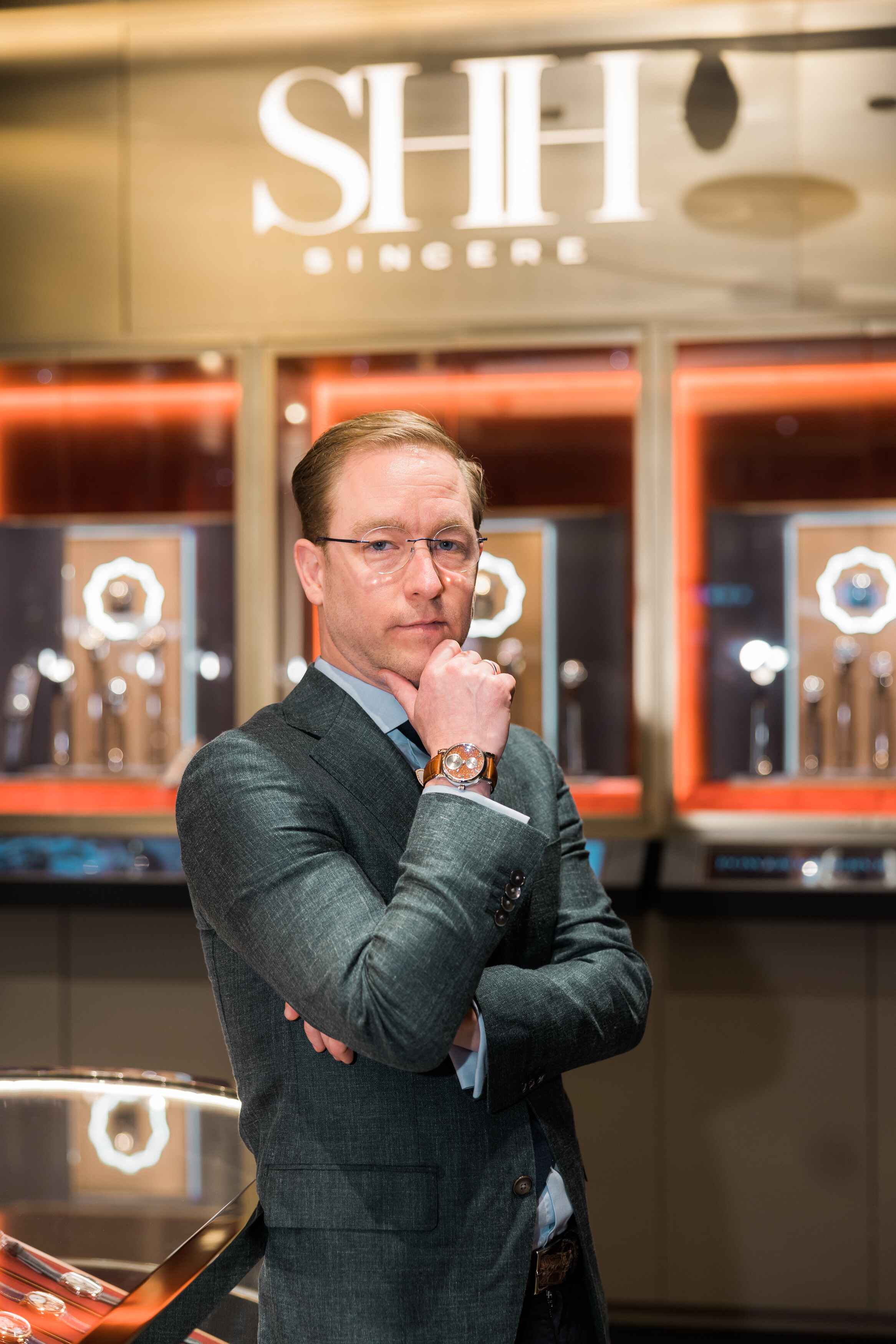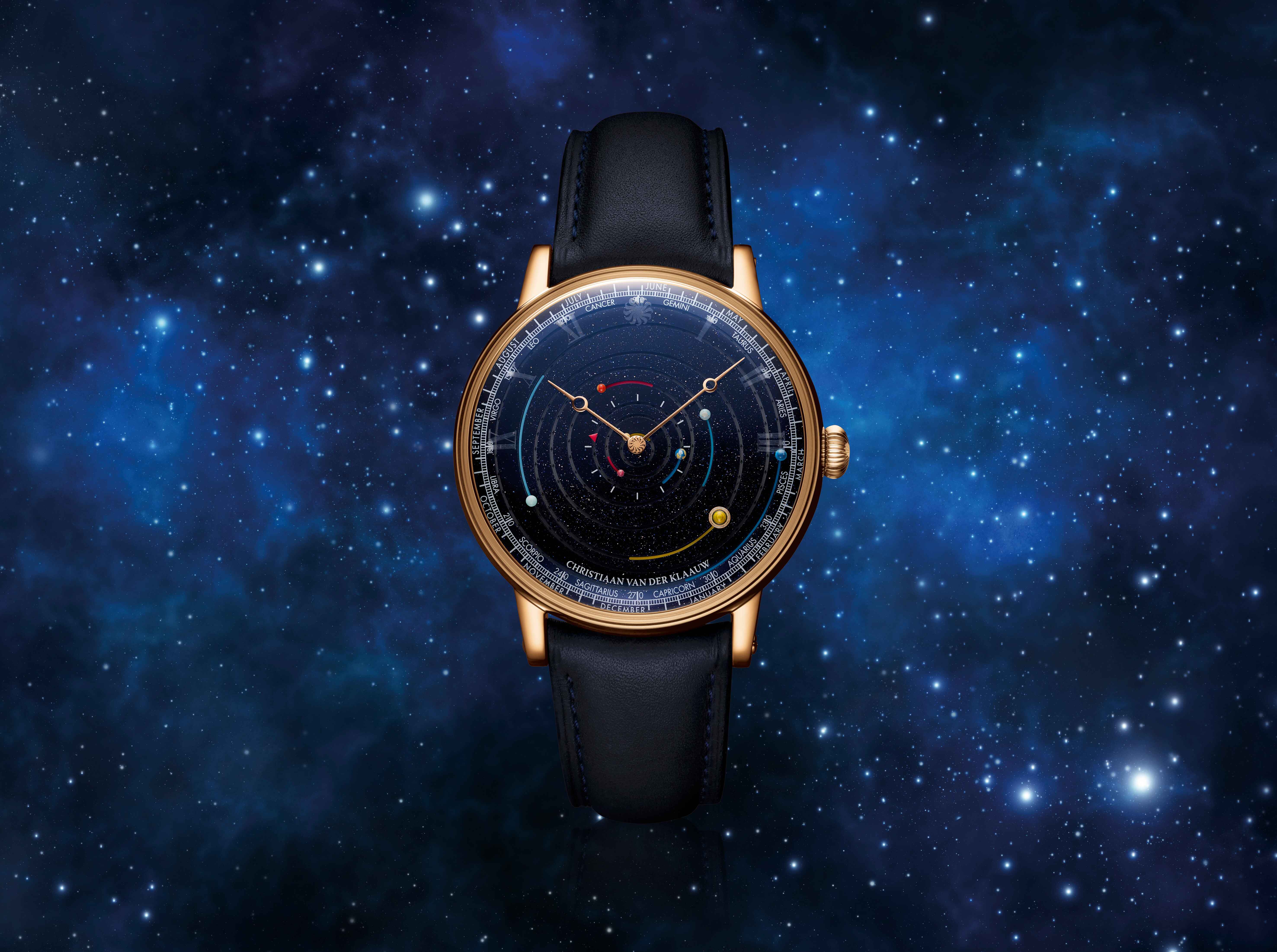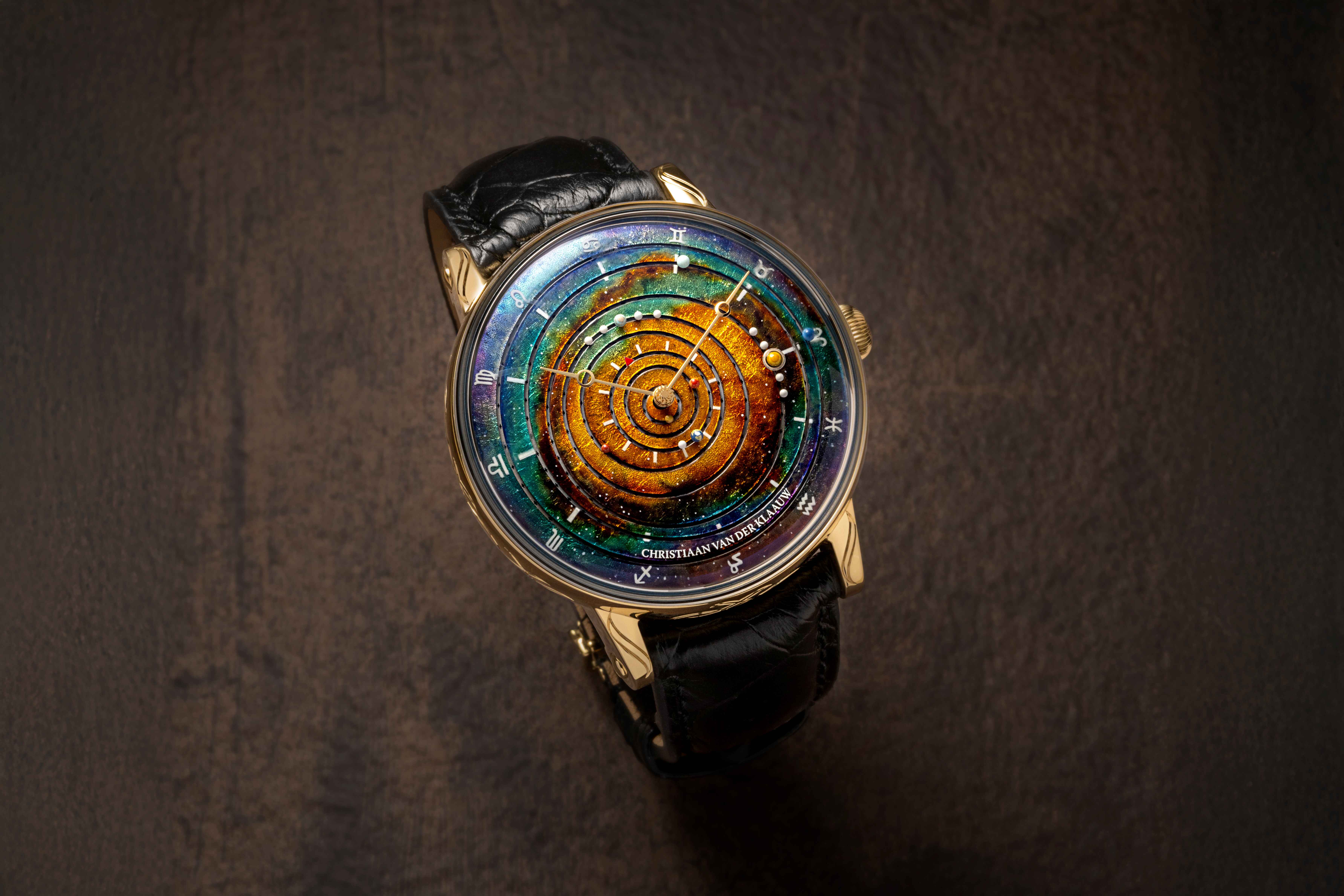Timekeeping has always been intimately tied to the celestial dance of heavenly bodies, so it’s no surprise that wristwatches continue to celebrate this legacy with poetic – if arguably frivolous – complications like moon phases and star charts. But to fit the entire solar system on one’s wrist? That’s a feat Dutch watchmaker Christiaan van der Klaauw has devoted his career to. On the 50th anniversary of his eponymous brand last year, he achieved this ambition with the CVDK Grand Planetarium Eccentric – the world’s first and only mechanical watch to display all eight planets. (Sorry, Pluto.)
 Pim Koeslag, CEO, Christian van der Klaauw
Pim Koeslag, CEO, Christian van der Klaauw
Known for its astronomical complications, CVDK has crafted several planetarium watches over the years, including one for Van Cleef & Arpels in 2014. This expertise made van der Klaauw uniquely positioned to embark on his magnum opus, the Grand Planetarium Eccentric, which began as preliminary sketches in 2017 (post-retirement, we might add). However, the project gained real momentum in 2022 when fellow Dutchman Pim Koeslag became the brand’s majority shareholder and CEO, transforming van der Klaauw’s vision into reality by advancing the sketches into detailed CAD designs.
The result is a 44mm case housing an aventurine dial cut into nine pieces to create the paths on which the eight planets will travel, mimicking the real-time orbits of the actual planets. The technical triumph lies in capturing the extraordinarily long orbits of Uranus (84.02 years) and Neptune (164.80 years). These orbits are not perfectly circular but follow eccentric trajectories – hence the name. Unsurprisingly, this is the brand’s most complex creation to date, with the planetarium mechanism comprising gears that collectively feature an astonishing 3,338 teeth.
The watch owes its existence to the meeting of two horological geniuses. While van der Klaauw is a legendary advocate of astronomical complications, his new CEO is no regular suit. A trained watchmaker, Koeslag spent nearly two decades as Technical Director at Frederique Constant. During that tenure, he co-founded and helmed Ateliers deMonaco, an haute horlogerie brand acquired by Citizen in 2016.
“That you can take a couple of chunks of metal and make a clock with your bare hands was really amazing to me,” shares Koeslag of his first brush with horology in Amsterdam’s watchmaking school. “And it’s a funny story because my father does administrative work and my mother works in healthcare – both completely unrelated to this industry. But while I was in the library, I saw my family name in one of the watchmaking books. I called up some family members and found out one of my ancestors from the 1600s was a clockmaker. I guess it was meant to be.”
That wasn’t the only thing written in the stars. Van der Klaauw himself had given a lecture at Koeslag’s school, prompting the then-19-year-old Koeslag to seek employment with the master watchmaker. “But he told me to go to Geneva first to gain a bit more experience,”. By the time Koeslag returned to the Netherlands, van der Klaauw had retired and sold the company to designer couple Daniel and Maria Reintjes, who took care of the brand for 15 years. “Two years ago, I heard that they were looking to hand it over to the next generation, and so I called them. A couple of months later, it was done.”
 Grand Planetarium Eccentric
Grand Planetarium Eccentric
Koeslag’s background gave him remarkable insight into the intricacies of watchmaking, the challenges of growing a business, as well as the demands of entrepreneurship. He was instrumental in developing Frederique Constant’s first in-house movement, building a portfolio of 30 calibres that included a tourbillon, a chronograph, and a minute repeater. During his tenure, the brand grew from producing 15,000 watches annually to 165,000. At Ateliers deMonaco, he created the Quantieme Perpetual Calendar QP-EZ, still regarded as one of the most impressive perpetual calendar movements ever made, thanks to its exceptional ease of use.
“I was the one inventing all kinds of weird stuff no one was able to explain to the press, so I had to do it at the watch fairs, and that was key. A lot of watchmakers have difficulties communicating. Even at CVDK I make all the prototypes myself and I do the final quality control checks, so if someone comes to me with a faulty watch, I can look them in the eye and say ‘I’m sorry.’ I find this very important. You can only f*** up once, so it’s always about trust.”
Having a highly visual and engineering-centred mind certainly helped, too. “The Grand Planetarium Eccentric has 365 components,” he says. “If you gave me a piece of paper right now, I could probably draw them all. It feels natural.”
 Grand Planetarium Eccentric for Sincere Fine Watches’ 70th anniversary
Grand Planetarium Eccentric for Sincere Fine Watches’ 70th anniversary
As the third torchbearer for CVDK, Koeslag admits that his vision for the brand diverges from that of its founder and the Reintjeses. “We are all very different. Christiaan was a real craftsman. He was making watches to sell only in Holland, and he liked to work alone. Daniel and Maria saw it differently, and wanted to show that the company was very international, which led to the collaboration with Van Cleef & Arpels and the GPHG wins. But they still rarely sold to the rest of the world. So, my vision is to mitigate risk by expanding focus, starting with Asia.”
It’s part of the reason CVDK unveiled a stunning special edition of the Grand Planetarium Eccentric for Sincere Fine Watches’ 70th anniversary last November. Instead of an aventurine dial, the Sincere Platinum Jubilee edition features a hand-painted face inspired by a painting van der Klaauw created, based on a photograph taken by the James Webb telescope. It took Geneva-based artist Gael Colon eight layers of paint to replicate the mesmerising cosmos. In this edition, additional moons accompany the tiny orbs of Earth, Neptune, and Saturn. The case and lugs, now in yellow gold instead of the original platinum or rose gold, have been delicately engraved. Only three were made, one for each outpost of Sincere Fine Watches in Singapore, Malaysia, and Thailand.
The brand’s focus on astronomical watches might seem restrictive to some, but Koeslag argues the opposite: “I can think of at least 10 more complications based on astronomy. I was watching a movie about space on the flight over here, and there are planets made of sapphire, planets that rain silicon, and planets that orbit three suns,” he enthuses. “The more in-depth you go, the more questions and ideas you have. It’s completely crazy.”







 Pim Koeslag, CEO, Christian van der Klaauw
Pim Koeslag, CEO, Christian van der Klaauw
 Grand Planetarium Eccentric
Grand Planetarium Eccentric
 Grand Planetarium Eccentric for Sincere Fine Watches’ 70th anniversary
Grand Planetarium Eccentric for Sincere Fine Watches’ 70th anniversary




 Back
Back
